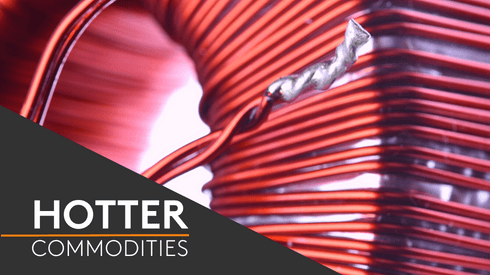The most-traded February copper contract on the SHFE stood at 51,770 yuan ($7,820) per tonne as of 10:23am Shanghai time, up by 70 yuan from the previous session’s close.
The news that Tongling Nonferrous Metals Group, China’s second-largest copper producer, will close part of its operations to ease pollution over the winter has renewed market concerns regarding potential supply tightness.
“China’s second largest copper smelter began halting capacity last week at its main production hub in Tongling after the local government ordered curbs as part of national plans to ease pollution,” John Meyer at SP Angel said last week.
“Halted 20-30% of smelting capacity from annual total of 800,000 metric tonnes – no timetable for how long will last,” he added.
Further support for red metal prices came from the release of positive economic data out of China on Friday.
China’s trade surplus expanded to 263.6 billion yuan in November, which bested expectations for a surplus of 231 billion yuan. Yuan-denominated exports were up by 10.3% year on year compared with an expected 2% increase, while imports rose 15.6% in the same comparison, against a projected 12.5% gain.
“Copper imports were the standout, surging 42.4% from October to 470,000 tonnes in November (up by 23.7% year on year). The rise backs up our view that a tightening copper-concentrate market is pushing many buyers into the refined metal market to satisfy its copper units,” ANZ Research said on Monday.
Yet gains were muted amid rising concerns over a government-led deleveraging push in China which could tighten liquidity towards the year-end.
“The euphoria over the trade data may have been crimped by reports that Chinese authorities plan to effectively control leverage next year to prevent major risks,” ANZ Research added.
Meanwhile, softer Chinese inflation data released late on Friday has also exerted some downward pressure on the base metals complex this morning.
Chinese data released overnight on Friday showed the country’s consumer inflation slowed more than expected in November with a gain of 1.7%, compared with an expected increase of 1.8%. Meanwhile, Chinese producer prices rose 5.8% from a year earlier, compared with the previous month’s rise of 6.9%, according to data from the National Bureau of Statistics.
SHFE zinc, aluminium prices higher; rest weaker
- The SHFE February zinc contract price was the standout performer this morning, rising 155 yuan or 0.6% to 24,860 yuan per tonne.
- The SHFE February aluminium contract price edged 5 yuan higher to 14,325 yuan.
- The SHFE January lead dropped by 80 yuan to 18,470 yuan per tonne.
- The SHFE May nickel fell by 290 yuan to 88,830 yuan per tonne.
- The SHFE January tin price slid 370 yuan to 138,860 yuan per tonne.
Currency moves and data releases
- The dollar index was flat at 93.86 as of 10.50am Shanghai time – it had reached as high as 94.09 on Friday, which was its highest since November 22.
- In other commodities, the Brent crude oil spot price was down by 0.42% to $63.05 per barrel, and the Texas light sweet crude oil spot price decreased by 0.42% to $57.03.
- In equities, the Shanghai Composite was up by 0.41% to 3,303.40.
- In US data on Friday, positive employment growth hit 86 straight months with non-farm employment change results showing 228,000 Americans joined the labor market, above the forecast of 198,000. But the unemployment rate stayed flat at 4.1% and average hourly earnings disappointed with a 0.2% gain.
- The economic agenda is very light today with only Jolts job openings from the US of note.
| LME snapshot at 02.24am London time | ||
| Latest three-month LME Prices | ||
| Price ($ per tonne) |
Change since yesterday’s close ($) | |
| Copper | 6,610.50 | 39.5 |
| Aluminium | 2,015.50 | 5 |
| Lead | 2,455 | 8 |
| Zinc | 3,110 | 27.5 |
| Tin | 19,415 | -35 |
| Nickel | 10,990 | 40 |
| SHFE snapshot at 02.23am London time | ||
| Most-traded SHFE contracts | ||
| Price (yuan per tonne) |
Change since yesterday’s close (yuan) | |
| Copper | 51,770 | 70 |
| Aluminium | 14,325 | 5 |
| Zinc | 24,860 | 155 |
| Lead | 18,470 | -80 |
| Tin | 138,860 | -370 |
| Nickel | 88,830 | -290 |
| Changjiang spot snapshot on December 11 | ||
| Range (yuan per tonne) |
Change (yuan) | |
| Copper | 51,400—51,420 | -70 |
| Aluminium | 13,910—13,950 | -20 |
| Zinc | 24,800—25,600 | -270 |
| Lead | 18,450—18,650 | -200 |
| Tin | 139,500—141,000 | -250 |
| Nickel | 88,500—88,700 | 950 |





